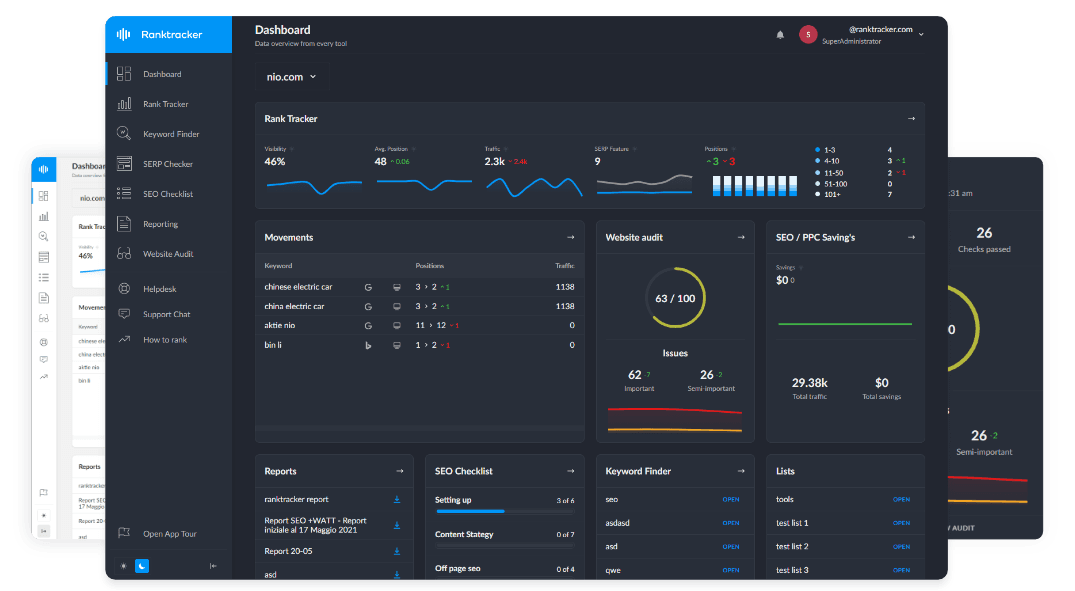Intro
Despite Google’s ongoing algorithm updates and stricter enforcement of link quality, black hat link building is still very much alive in 2025. Many of these outdated or manipulative tactics are still being sold as "affordable" or "high-impact"—but using them can put your domain at serious risk.
Here’s a breakdown of the black hat link building strategies still making the rounds this year, and what to use instead.
1. Private Blog Networks (PBNs)
PBNs are a network of sites created solely to manipulate rankings by selling backlinks. While they’ve become more sophisticated, they remain detectable by Google.
Why it’s risky:
-
Often deindexed or flagged
-
Thin content, spun articles
-
Little to no real traffic
-
Risk of manual penalty or complete devaluation
✅ Use Ranktracker’s Backlink Checker to detect unnatural patterns in your backlink profile and monitor link quality.
2. Automated Link Blasts
Tools and gigs that promise “500 backlinks overnight” often rely on spammy forums, comments, and low-tier directories.
Still sold as:
-
Tiered link packages
-
GSA Search Engine Ranker blasts
-
Xrumer blasts
Why it’s risky:
-
Links are often nofollow, low-quality, and spammy
-
Creates unnatural spikes in velocity
-
Almost always triggers algorithmic suppression
✅ Stick to earned or manually built links. Monitor suspicious velocity changes with Ranktracker’s Backlink Monitor.
3. Link Injection via Hacked Sites
Some sellers promise “high-authority backlinks” by injecting links into compromised CMS sites without the webmaster’s knowledge.
Why it’s risky:
-
Illegal and unethical
-
Link will eventually be removed
-
High risk of Google manual action
-
Damages brand reputation
✅ Avoid any service that can’t verify how the link is being placed. If it sounds too good to be true—it is.
4. Footer and Sidebar Site-Wide Links
Selling links in footers or sidebars is still a tactic in 2025—especially on expired domains posing as blogs or directories.
Why it’s risky:
-
Looks unnatural
-
Often irrelevant
-
Risk of site-wide penalties
✅ Focus on editorial links in main content areas. Ranktracker’s SERP Checker helps you find natural placements your competitors are winning.
5. Fake Guest Posts on Low-Quality Sites
Some providers create fake contributor accounts on junk sites or use expired domains posing as real blogs to publish guest posts.
The All-in-One Platform for Effective SEO
Behind every successful business is a strong SEO campaign. But with countless optimization tools and techniques out there to choose from, it can be hard to know where to start. Well, fear no more, cause I've got just the thing to help. Presenting the Ranktracker all-in-one platform for effective SEO
We have finally opened registration to Ranktracker absolutely free!
Create a free accountOr Sign in using your credentials
Why it’s risky:
-
Fake authority
-
Low trust signals
-
Short-lived value
-
Prone to deindexing
✅ Always vet domain age, traffic, and backlink history before placement.
6. Over-Optimized Anchor Text Schemes
Even if the site is real, using exact-match commercial anchors across dozens of links is still a black hat tactic.
Common schemes:
-
“Buy red dresses online” across multiple domains
-
Repeating the same keyword-rich anchor too frequently
Why it’s risky:
-
Signals manipulation
-
Can suppress rankings for target pages
-
Often triggers spam filters
✅ Use Ranktracker to audit your anchor text diversity and adjust as needed.
7. Link Exchanges and Link Wheels
Old-school link swaps (“I’ll link to you if you link to me”) are still offered, often disguised as guest post trades or blog networks.
Why it’s risky:
-
Google can easily detect reciprocal linking
-
Link wheels (A → B → C → A) are algorithmically mapped
-
Offers no long-term value
✅ Instead of exchanging links, create assets others want to link to organically.
Final Thoughts
Black hat link building hasn’t disappeared in 2025—it’s just gone deeper underground and become harder to detect at a glance. But Google’s smarter than ever, and one bad link campaign can erase months of SEO progress.
To avoid the risk and stay competitive:
-
Vet every provider thoroughly
-
Use Ranktracker to monitor backlink safety, anchor health, and indexing
-
Focus on clean, scalable link strategies that align with Google's evolving guidelines
Your rankings—and your reputation—depend on it.

